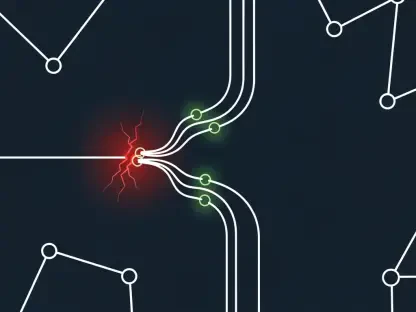In an era where private 5G networks are becoming the backbone of industrial transformation, Nokia’s latest strategic moves have sparked intense curiosity within the tech and telecom sectors. The company, long regarded as a powerhouse in telecommunications, has signaled a potential shift in its approach to private wireless solutions, raising questions about its future market positioning. This pivot centers on a possible divestment of its enterprise campus edge division within the coming year, a decision that could reshape how Nokia engages with the rapidly evolving private 5G landscape. While the specifics remain under review, the broader implication is clear: Nokia appears to be honing its focus on mission-critical industries such as public safety, railways, and utilities, potentially stepping back from direct involvement in smaller campus deployments like factories and ports. This recalibration prompts a deeper exploration into whether Nokia is redefining its role or simply refining its strengths to maintain dominance in a competitive field.
Strategic Shift in Private Wireless Focus
Nokia’s announcement to potentially divest its enterprise campus edge division marks a significant turning point in its private 5G strategy. This move suggests a deliberate narrowing of scope, with the company prioritizing high-stakes, mission-critical sectors over broader campus network deployments. By focusing on industries that demand robust, reliable connectivity—think emergency services or critical infrastructure—Nokia aims to secure multi-million-dollar contracts that align with its expertise in large-scale wireless solutions. CEO Justin Hotard has publicly reinforced this commitment, emphasizing that the core offerings, including radios and network equipment, remain central to the company’s vision. Instead of direct sales to smaller enterprises, Nokia plans to leverage partnerships with telecom operators to manage campus network implementations. This strategic realignment raises intriguing questions about how the company will balance its ambitions with the practicalities of a more focused market approach.
The implications of this shift extend beyond immediate business decisions, touching on Nokia’s long-term positioning in the private 5G arena. While the company intends to maintain its leadership as a leading Western vendor, the decision to possibly offload the Digital Automation Cloud (DAC) integration solutions—rather than core products like small cell RAN—indicates a nuanced retreat from certain operational areas. Analysts suggest that this restructuring does not equate to a full exit from campus networks but rather a pivot to an indirect delivery model through service providers. This approach could streamline Nokia’s operations, allowing it to allocate resources more effectively toward mission-critical projects. However, it also introduces a layer of dependency on operator partners to effectively market and deploy Nokia’s solutions in smaller settings. The success of this model remains to be seen, as it hinges on the strength and execution of these collaborative efforts in a highly competitive sector.
Market Position and Analyst Insights
Despite the strategic recalibration, Nokia’s dominance in the private 5G market appears secure, at least for the near term, according to industry observers. Analysts from firms like SNS Telecom & IT argue that Nokia will retain its position as a top Western vendor, even if growth in the private wireless sector might proceed at a more measured pace due to the focused approach. James Bennett from SNS highlighted that the potential divestment targets specific integration solutions rather than the foundational technology Nokia is known for, such as core network equipment. This distinction is critical, as it suggests that Nokia’s essential contributions to private 5G infrastructure remain intact and available through alternative channels like telecom operators. The company’s reputation for reliability and innovation in wireless technology continues to bolster confidence among stakeholders, even as it navigates this period of transition and redefinition.
However, not all perspectives are uniformly optimistic, as uncertainties loom over the long-term impact of Nokia’s strategy. Roy Chua, principal at AvidThink, pointed out that concentrating on mission-critical contracts could potentially slow Nokia’s expansion in the broader private wireless market if operator partnerships fail to deliver expected results for campus networks. The divestment process itself is still under evaluation, with no finalized decisions, meaning outcomes could unfold over an extended period, possibly spanning months or even years. This ambiguity adds complexity to forecasting Nokia’s trajectory, as market dynamics and partner performance will play pivotal roles in shaping the results. The balance between maintaining a strong foothold in high-value sectors and ensuring indirect presence in smaller deployments will be a delicate one, requiring careful coordination and strategic foresight to mitigate risks.
Navigating Future Challenges
Looking ahead, Nokia’s recalibration in the private 5G space presents both opportunities and hurdles that will define its market evolution. The emphasis on mission-critical industries positions the company to capitalize on high-value contracts, leveraging its deep-rooted expertise and established reputation for delivering robust solutions. Success in this arena could solidify Nokia’s standing as an indispensable player in sectors where connectivity is non-negotiable. Yet, the reliance on telecom operators to handle campus network sales introduces an element of risk, as the effectiveness of these partnerships remains unproven at scale. Nokia must navigate this uncertainty by fostering strong collaborative frameworks and ensuring that its technology integrates seamlessly into partner-led deployments. The coming months will be crucial in determining whether this strategic pivot enhances Nokia’s focus or limits its reach in a dynamic and expanding field.
Reflecting on the journey so far, Nokia’s efforts to redefine its role in private 5G networks underscore a pivotal moment of adaptation and focus. The decision to prioritize mission-critical sectors while adapting its approach to campus solutions through partnerships highlights a calculated response to market demands. Analysts provide a balanced view, acknowledging Nokia’s enduring strengths alongside potential growth constraints tied to this narrower scope. As the industry watches closely, the unresolved status of the campus edge division divestment adds a layer of anticipation to Nokia’s next steps. Moving forward, stakeholders should monitor how Nokia strengthens operator alliances and refines its offerings for critical industries. Exploring innovative collaboration models and investing in partner training could prove essential to overcoming challenges. Additionally, keeping an eye on emerging private 5G trends will help anticipate shifts that might influence Nokia’s strategy, ensuring adaptability in an ever-changing technological landscape.









